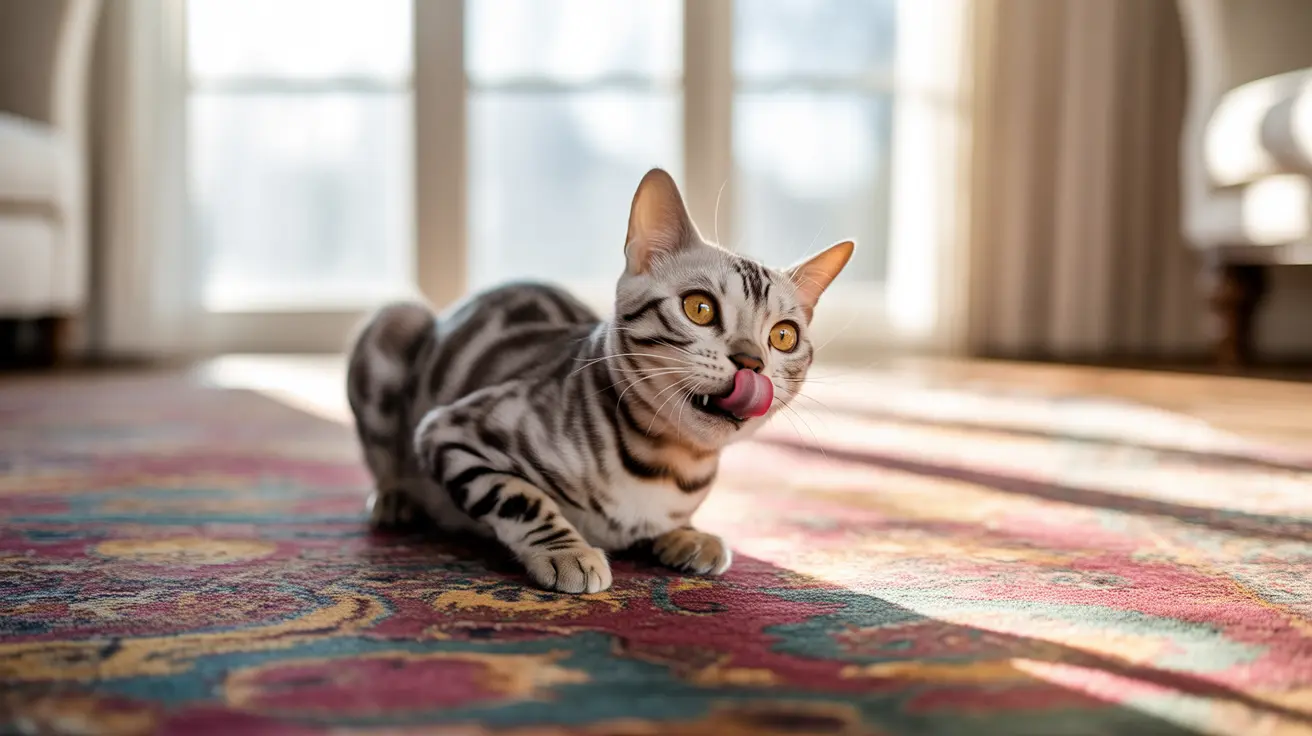If you've ever caught your feline friend obsessively licking the carpet, you're not alone. This peculiar behavior can range from harmless exploration to a sign of underlying health issues. Understanding why cats lick carpet and when to be concerned is crucial for every pet parent's peace of mind.
In this comprehensive guide, we'll explore the various reasons behind carpet licking, potential health risks, and effective solutions to address this behavior. Whether your cat is an occasional carpet licker or shows persistent interest in your floor coverings, you'll learn how to identify the cause and take appropriate action.
Common Reasons for Carpet Licking Behavior
Sensory Exploration and Environmental Factors
Cats possess an incredibly sensitive sense of smell, approximately 14 times stronger than humans. When your cat licks the carpet, they might be investigating lingering scents from food spills, cleaning products, or other substances that are undetectable to human noses. This natural investigative behavior helps cats gather information about their environment.
Stress and Anxiety Signals
Carpet licking can be a self-soothing mechanism for cats experiencing anxiety or stress. Changes in the household, such as moving to a new home, introducing a new pet, or alterations in daily routines, may trigger this behavior. Some cats develop this habit as a coping mechanism, similar to how humans might bite their nails when nervous.
Medical Concerns and Health Implications
Pica and Nutritional Deficiencies
Sometimes, carpet licking may indicate pica - a condition where animals crave and consume non-food items. This behavior could signal underlying nutritional deficiencies or digestive issues that require veterinary attention. Indoor cats are particularly susceptible to developing pica due to limited environmental stimulation.
Physical Health Risks
The act of carpet licking can pose several health risks to your cat. Ingesting carpet fibers may lead to dangerous gastrointestinal blockages requiring surgical intervention. Additionally, exposure to cleaning chemicals residue on carpets can cause oral ulcers, drooling, and digestive upset.
Prevention and Management Strategies
Environmental Enrichment
Providing adequate mental and physical stimulation is crucial in preventing compulsive behaviors like carpet licking. Ensure your cat has access to interactive toys, scratching posts, climbing structures, and regular play sessions. Creating an enriching environment can significantly reduce stress-related behaviors.
Safe Cleaning Practices
Use pet-safe cleaning products and ensure thorough rinsing after carpet cleaning. Consider steam cleaning or water-only methods when possible. Keep cats away from freshly cleaned areas until completely dry to prevent exposure to chemical residues.
Frequently Asked Questions
Why is my cat licking the carpet, and when should I be concerned about this behavior?
Be concerned if your cat licks carpet persistently, shows signs of ingesting fibers, or exhibits additional unusual behaviors. Occasional investigative licking is normal, but frequent or obsessive licking warrants veterinary attention.
Can chemicals or cleaning products on carpets harm my cat if they lick the floor?
Yes, cleaning products can be harmful if ingested through carpet licking. Many common household cleaners contain toxins that can cause oral burns, digestive issues, and serious health complications in cats.
How can I tell if my cat's carpet licking is due to stress or a medical issue like pica?
Monitor the timing and circumstances of the behavior. Stress-related licking often occurs during changes or specific triggers, while pica-related licking typically involves actual consumption of carpet fibers and may be accompanied by other unusual eating behaviors.
What health risks can result from my cat ingesting carpet fibers while licking?
Ingesting carpet fibers can lead to gastrointestinal obstruction, requiring emergency surgery. Other risks include internal injuries, digestive problems, and complications from consuming toxic substances trapped in the carpet.
What are effective ways to stop my cat from licking the carpet excessively?
Implement environmental enrichment, address potential stressors, use pet-safe cleaning products, and consult with your veterinarian about underlying health issues. Positive reinforcement and redirection techniques can also help modify this behavior.
Conclusion
While carpet licking in cats can stem from various causes, understanding the underlying reasons helps determine appropriate interventions. By maintaining a healthy environment, addressing potential medical issues promptly, and providing proper enrichment, you can help manage or prevent this behavior in your feline companion.
Remember to consult with your veterinarian if you're concerned about your cat's carpet licking behavior, especially if it becomes persistent or is accompanied by other concerning symptoms. Early intervention can prevent more serious health complications and ensure your cat's well-being.






